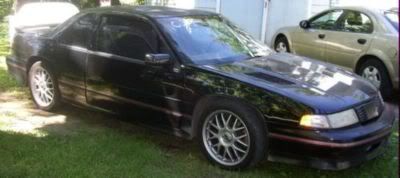1996 Grand Prix SE 3100v6 Turbo at 7psi
Ignition timing is something I feel I could spend hours upon hours of tuning for perfection. I am in the beginning stages of tuning the ignition tables.
I am running 93 octane and plan to run nothing less then 91. There aren't to many spark tables in the HP Tuners repository to compare. I tried on for a 3400 turbo 10psi but the higher rpm was retarded so severly it had no power in boost.
So I have stock tables again and plan to advance 2 degrees at a time while correcting any tables that show knock. Also disabling torque management to prevent skewing the spark tables.
Using the PCM to log torque through the transmission I was able to roughly find the most power at idle. I basically set the parking brake and put the car in gear and commanded the spark with HP Scanner while watching the torque adjusting. I found the most power for idle was 22*. Figuring it would also be the most efficient.
Now, I did some research and found these values and would like the advice from the wise members of 60degreev6.com.
Crank 10-20* (15* in my setting)
Idle 15-32* (in my case 22*)
Cruise 35-40* (47* in extreme cases)
WOT w/ turbo 10-22*
Acceleration 8-45*
Over-Run 10-26*
Now, these figures aren't 60*v6 specific.
Any tips and tricks are welcomed and nothing is too technical, I can hang with the best when it comes to math and science.
Specifically if anyone knows the speed of the flame front in a 3x00 at 9.5:1 cr w/ 93 octane I can use that data to start a rough tune and go from there.
If anyone also has a complete map of areas like cruise, wot, over-run, ect. I made my own but it is flawed I'm sure. Mapping WOT is the easy one and I have that down good. But the rest is tricky and I just don't have enough log files yet.
Or even a well tuned ignition table for a 3x00 would be cool so I can compare my tuning down the road.
Lets see what you all got, lol
Thanks
Ignition timing is something I feel I could spend hours upon hours of tuning for perfection. I am in the beginning stages of tuning the ignition tables.
I am running 93 octane and plan to run nothing less then 91. There aren't to many spark tables in the HP Tuners repository to compare. I tried on for a 3400 turbo 10psi but the higher rpm was retarded so severly it had no power in boost.
So I have stock tables again and plan to advance 2 degrees at a time while correcting any tables that show knock. Also disabling torque management to prevent skewing the spark tables.
Using the PCM to log torque through the transmission I was able to roughly find the most power at idle. I basically set the parking brake and put the car in gear and commanded the spark with HP Scanner while watching the torque adjusting. I found the most power for idle was 22*. Figuring it would also be the most efficient.
Now, I did some research and found these values and would like the advice from the wise members of 60degreev6.com.
Crank 10-20* (15* in my setting)
Idle 15-32* (in my case 22*)
Cruise 35-40* (47* in extreme cases)
WOT w/ turbo 10-22*
Acceleration 8-45*
Over-Run 10-26*
Now, these figures aren't 60*v6 specific.
Any tips and tricks are welcomed and nothing is too technical, I can hang with the best when it comes to math and science.
Specifically if anyone knows the speed of the flame front in a 3x00 at 9.5:1 cr w/ 93 octane I can use that data to start a rough tune and go from there.
If anyone also has a complete map of areas like cruise, wot, over-run, ect. I made my own but it is flawed I'm sure. Mapping WOT is the easy one and I have that down good. But the rest is tricky and I just don't have enough log files yet.
Or even a well tuned ignition table for a 3x00 would be cool so I can compare my tuning down the road.
Lets see what you all got, lol
Thanks







Comment